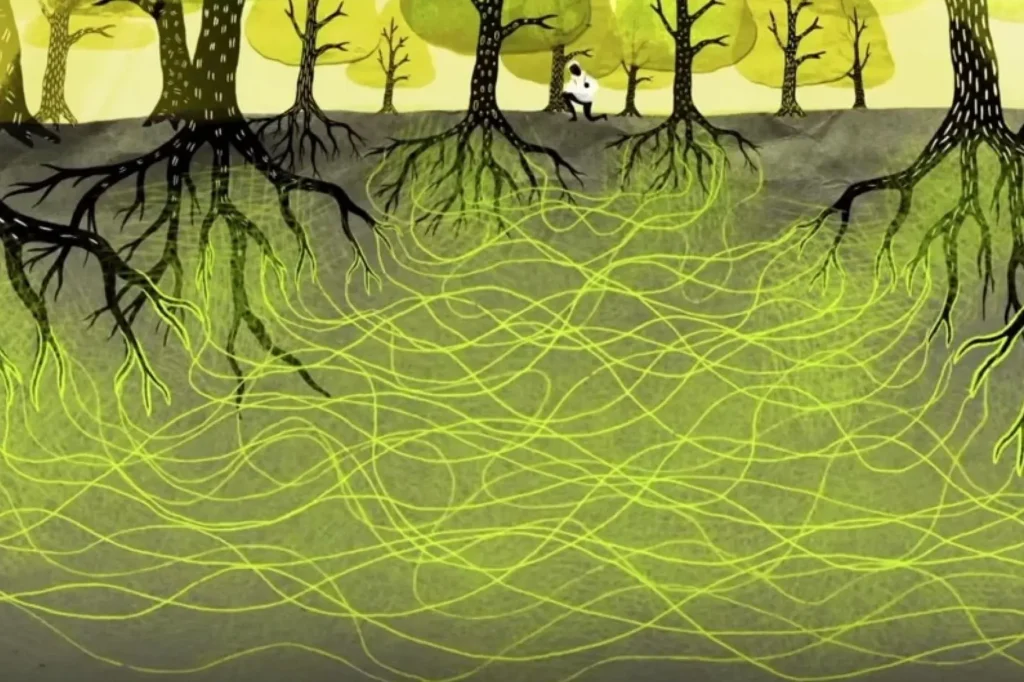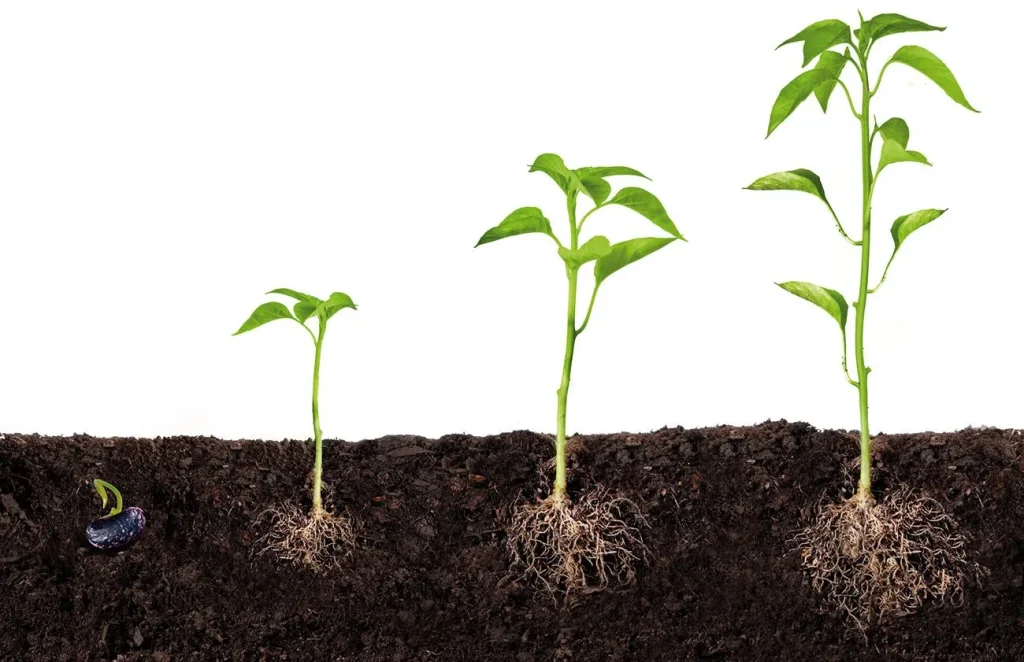Between the roots and microorganisms under our feet, something’s going on. Even though they have no mouths to talk with and no ears to hear, they’ve developed their way of communication. In the following article, we shall discuss the phenomena of plant communication- the complex network of signals and responses that reach our eyes and ears.
Coming in the form of chemicals, or sometimes electricity and even sound, the plants are signaling their neighbors, alerting them of an upcoming predator, coordinating their growth, and sometimes even allocating scarce resources. It’s happening in species throughout the plant kingdom, from the towering trees of the rainforest to the tiny wildflowers growing in our backyard. And scientists hope that by understanding how this communication works, they’ll be able to gather essential information about the plants’ resilience, their ability to adapt rapidly to new circumstances, and inevitably, their survival.
It could eventually help us in our daily lives, in agriculture, and even conservation efforts. So let us join the journey of plant communication, and feast our eyes with astonishment upon the universe that lies hidden beneath the surface.

The Science Behind Plant Communication
Contents
While a common misconception might regard plants as static objects and would not believe that they interact in a network, this statement is far from the truth. Scientists have studied the complex systems of chemicals, electrical signals, and even pheromones that allow plants to talk to one another. From a variety of processes, plants develop an entire communication system that transmits vital information.
Chemical Signaling in Plants
The best understood form of plant communication is chemical signaling. Plants release multiple volatile organic compounds into the atmosphere and can be detected by their neighbors. This information contains a lot about the plant’s state of health, its stress, and even the presence of nearby herbivores. If the plant begins to be eaten by herbivorous insects, it releases special substances that act as a signal of an approaching threat to nearby plants. When such signals are detected, the neighboring plant begins to release chemical compounds toxic to the herbivores or produce substances that repel pests.
This way, plants are able to develop collective defense mechanisms against common enemies.
Electrical Signaling in Plants
While chemical signaling happens mostly through the air, plants can talk directly through their roots. They are able to send messages quickly across long distances through electrical signaling, which are referred to as systemic electrical signals or action potentials.
One way to think about this is like our nervous system sends electrical impulses from our brain to the rest of our body; plants can send their electrical signals throughout the plant’s vascular system. If a part of a plant is damaged or under assault, then currents arise, run to the rest of the plant, and let it know it’s being under attack. By way of these messaging networks, plants instantly reallocate reserves to the injury and activate Jeremy’s defense mechanisms counterattack routers.
Physical and Mechanical Signaling in Plants
Plants can also communicate via physical and mechanical mechanisms that integrate the chemical and electrical signal pathways. When a plant is overshadowed by a neighbor’s plant, it may grow taller or bend towards the available source of light.
In most cases, the overshadowing stimulating response is characterized by shade avoidance, where the plant bends to get more sunlight. Specifically, shade-avoiding phenotypes enable the overshadowed plant to utilize stripes of sunlight. Plants communicate via contact or touch-based mechanisms. When plants are touched or their leaves crushed, the induced signaling triggers their primer neighbors to respond to the possible danger. The signal-response mechanism ensures the production of compensatory defense compounds and cell wall fortifications that enable the plants to withstand the damage.
The Importance of Plant Communication in Ecological Systems
Communication between plants is indispensable for the ecosystems, and it determines the quality of other relationships between the flora and various environments. The ability to provide relevant information helps to improve the responsiveness of the plants to climate conditions, synchronize their development and growth, and allocate resources better. Plant communication is one of the networks that maintain the overall quality of plant life.
Resource Sharing and Allocation
Plants in a community often share limited resources, such as water, nutrients, and light. Through communication, plants can optimize the allocation of these resources, ensuring that each plant receives its fair share. For example, when a plant detects a nearby competitor for resources, it may adjust its root growth pattern to explore different soil areas. By doing so, it can avoid direct competition and maximize the utilization of available resources.
Defense and Predation
In the battle for survival, plants rely on communication to defend themselves against predators and pests. When a plant is attacked, it can release volatile chemicals that not only warn neighboring plants of the impending danger but also attract natural enemies of the attacker. This indirect defense mechanism, known as “talking to the enemies of your enemies,” can help plants fend off herbivores and reduce damage.
Coordinated Growth and Development
Plants also use communication to coordinate their growth and development, ensuring efficient use of resources and maximizing their chances of survival. For instance, when a plant senses its neighbors are growing taller, it may respond by elongating its own stem to compete for sunlight. This coordinated growth strategy allows plants to adapt to changing environmental conditions and optimize their chances of successful reproduction.
Examples of Plant Communication in Action
Plant communication can be observed in various forms and situations, from the vast expanses of forests to the smallest patches of grass. Here are a few fascinating examples of plant communication in action:
1. The “Talking Trees” of the Forest
In dense forests, trees communicate with each other through an underground network of fungi known as mycorrhizal networks. Through these networks, trees exchange nutrients, water, and even chemical signals, allowing them to support each other and respond collectively to threats. This communication network has been dubbed the “wood wide web” and plays a crucial role in the resilience and survival of forest ecosystems.
2. Plant Communication in the Garden
Even in our own gardens, plant communication is at play. When a tomato plant is attacked by caterpillars, it can release volatile chemicals that attract parasitic wasps, which are natural enemies of the caterpillars. This indirect defense mechanism helps protect not only the tomato plant but also other neighboring plants from the same herbivores. It’s a prime example of how plants communicate to ensure collective defense.
3. Cooperative Communication in Wildflowers
In meadows and grasslands, wildflowers often grow in clusters or patches. Research has shown that these clusters are not random; they are the result of cooperative communication between the plants. Through chemical signaling, the plants coordinate their growth and flowering, ensuring that they bloom simultaneously. This synchronized flowering maximizes their chances of attracting pollinators and increases the overall reproductive success of the plant community on indratogel.

Implications for Agriculture and Plant Research
The study of plant communication has far-reaching implications for agriculture, plant research, and even our own well-being. By understanding and harnessing the power of plant communication, we can develop more sustainable agricultural practices, enhance crop yields, and reduce the reliance on chemical pesticides.
1. Sustainable Agriculture
Plant communication can help us develop sustainable agricultural practices by promoting natural pest control and reducing the need for chemical interventions. By understanding the signals and interactions between plants, we can design agricultural systems that harness the natural defense mechanisms of plants. This could lead to reduced pesticide use, healthier crops, and a more environmentally friendly approach to farming.
2. Improved Crop Yield and Quality
Plant communication can also be utilized to optimize crop yield and quality. By manipulating the signals that plants emit, we may be able to enhance their growth, increase resistance to diseases and pests, and improve nutrient uptake. This knowledge could revolutionize crop production and contribute to food security in a world facing increasing population pressures.
3. Nature-Inspired Solutions
The study of plant communication has inspired researchers to explore nature-inspired solutions for various challenges. For example, the development of bio-inspired sensor networks, inspired by plant signaling systems, could lead to more efficient and sustainable monitoring of environmental parameters. By mimicking the communication strategies of plants, we can tap into the wisdom of nature and develop innovative solutions for real-world problems.
Appreciating the Complexity of Plant Communication
Therefore, plants do not speak, but they understand the art of communication. With chemical signals, electrical impulses, and physical reactions, plants talk with one another in a silent language that influences how they interact with their surroundings. By revealing the secrets of plant language, we are taking the first steps toward more sustainable agriculture, higher crop yields, and a better understanding of the planet to which we are connected in many ways.
Remember this the next time you stroll through a forest or treat your garden and see this lush oasis. Even though they do not utter a word, thousands of voltage loops and a natural network of communication are operating underground. Plants talk, share and build, showing us how interconnected the planet we live on is. They demonstrate the elegant complexity of life and the entire realm of opportunities that smile at our feet. Now that we have announced it, let us continue exploring the wonderful world of nature.
Also read: REVOLUTION HEALTH: EMBRACING A NEW ERA OF WELLNESS 2024





